Understanding Pipe Stress Analysis

Mastering all aspects of pipe stress analysis is a lifelong pursuit.
Pipe Stress Analysis: Everything You Need to Know
There’s no question that when pipes fail, the consequences can be catastrophic, incurring fatalities, environmental disasters and massive financial losses. From 1994 through 2013, the United States had 745 serious incidents with gas distribution, causing 278 fatalities,1059 injuries and $110,58,083 in property damage. Fortunately, detailed and accurate pipe stress analysis can help prevent these disasters from happening. In this guide, we’ll cover the basics of pipe stress analysis to help you better understand this fundamental and necessary process.
What is Pipe Stress Analysis?
Pipe stress analysis is a specialized engineering discipline used to evaluate the behavior of piping systems under different operating conditions. Typically, the pipe stress analysis process includes modeling the piping system, applying boundary conditions, and using specialized software for piping stress calculations to determine the stresses and displacements.
Understanding the potential stresses a system must endure is vital to the system design process. Pipe stress analysis can inform the strength and durability of materials needed for the system and support systems needed to accommodate the calculated loads safely. These measures ultimately help prevent failures, leaks and other costly issues that can arise from excessive stress on pipes.
Various industries, including oil and gas, petrochemical, power generation, and manufacturing, rely on piping stress analysis. This analysis is often used to design new pipelines, process piping, and other critical systems. However, it can also assess and optimize existing piping systems to ensure their safety and continued operation.
Types of Pipe Stresses
Stresses can be categorized into two types: normal and shear stress.
Normal Stress
Normal Stresses Act Normal (perpendicular) to face of the crystal structure and are compressive or tensile (tend to be more in tension due to internal pressure).
Normal Stresses include the following:
Longitudinal (or Axial) Stress
This stress acts along the pipe’s axis and is caused by an internal force acting axially in the pipe.

One specific instance of axial stress is caused by internal pressure acting axially along the pipe. This pressure causes longitudinal stress in the pipe wall acting axially.
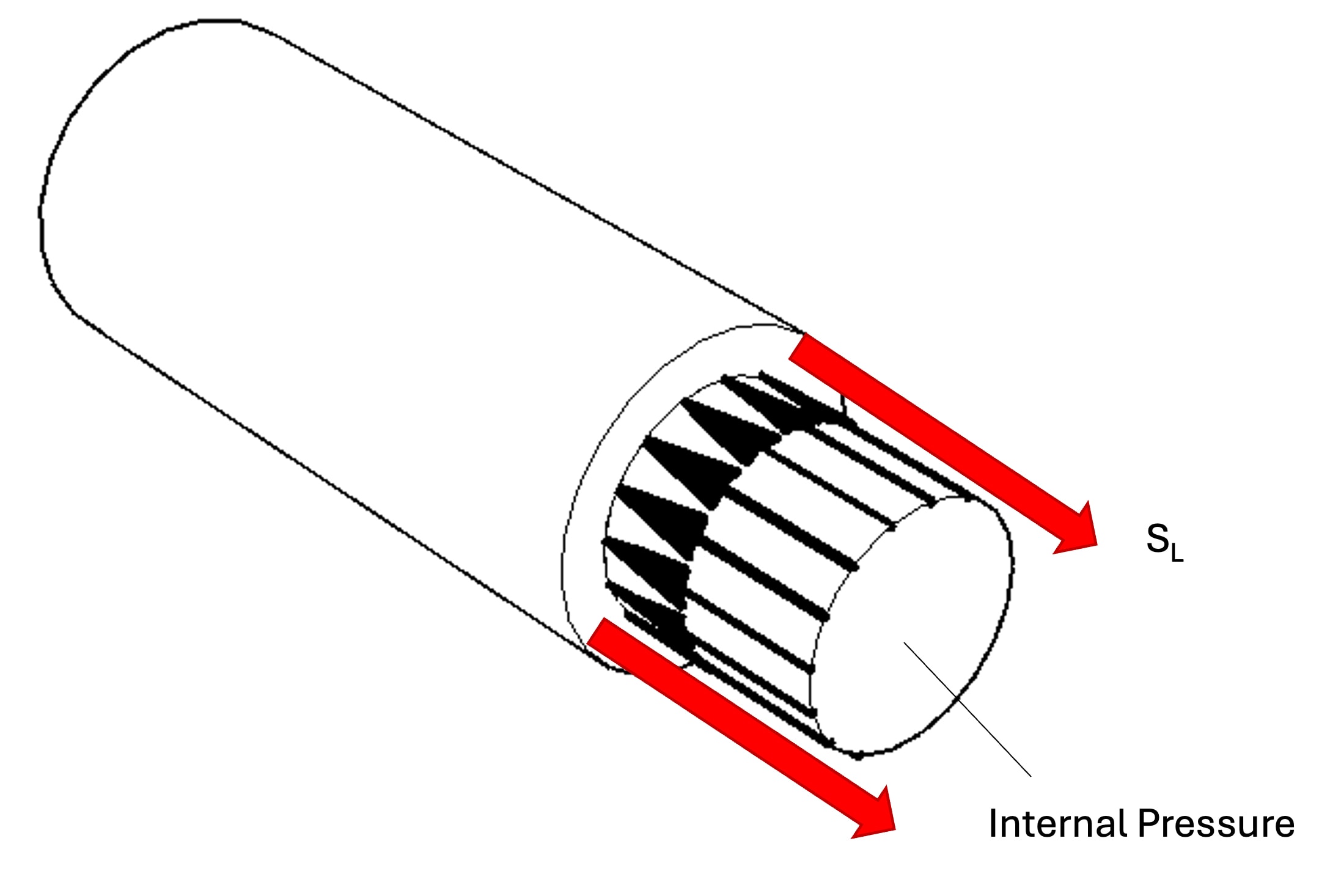
Hoop Stress
Hoop Stress is another normal stress present in the pipe caused by internal pressure. This stress differs from axial stress in that it acts parallel to the pipe circumference. Hoop stress can be approximated conservatively for thin-wall cylinders by assuming that the pressure force applied over an arbitrary length of pipe, l is resisted uniformly by the pipe wall over that same arbitrary length.
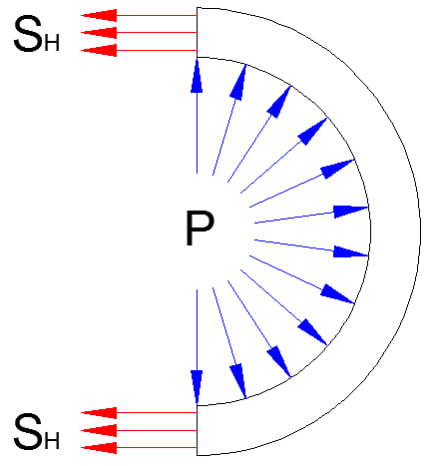
Radial Stress
Radial Stress is the third normal stress present in the pipe, which is also caused by internal pressure. The stress is equal to internal pressure at the pipe’s inner surface and equal to atmospheric pressure at the external surface. Radial stress is many times lower than longitudinal or hoop stress, and bending stress is maximized where radial stress is zero. As such, typically, radial stress is ignored for pipe stress analysis.
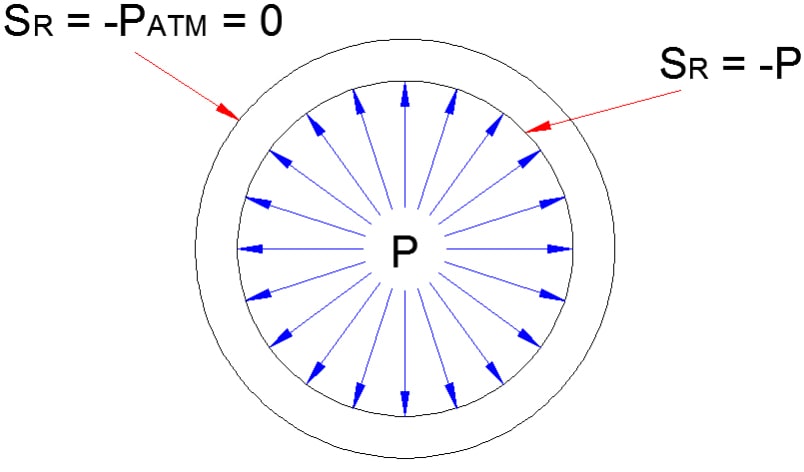
Bending Stress
Bending stress is caused by the bending moment on the pipe. It is zero at the pipe’s neutral axis and varies linearly across the pipe cross-section, from max compressive to max tensile.

Shear Stress
Shear stresses are the other type of stresses. Shear stresses act in a direction parallel to the face of the plane of the material crystal structure. This stress provides a slipping tendency to one plane against the other. Shear forces can be caused by forces or torsional moments.
Shear forces can be applied in a direction parallel to the face of the plane of the crystal structure of the material and tend to cause adjacent planes of the crystal to slip against each other. Shear stresses may be caused by more than one type of applied load. For example, shear stress may be caused by shear forces acting on the cross-section. However, the shear stresses caused by shear forces in a piping system are typically very small and so are traditionally ignored during pipe stress analysis.
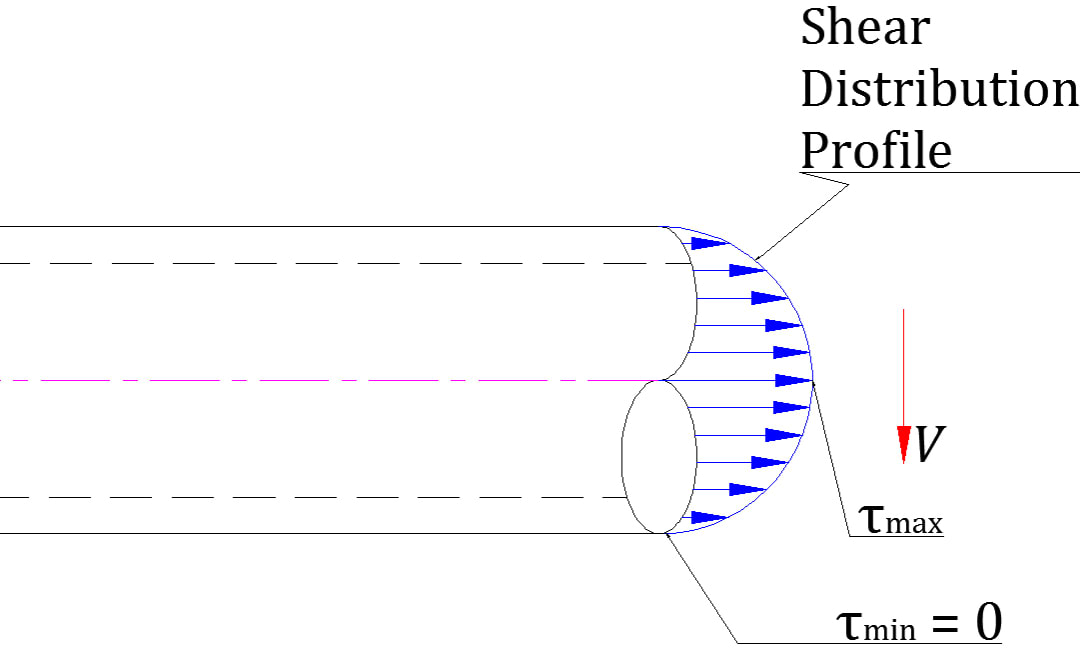
Torsional Stress
On the other hand, torsional stresses can be significant. Shear stresses are caused by a torsional, or twisting, moment acting on the pipe.
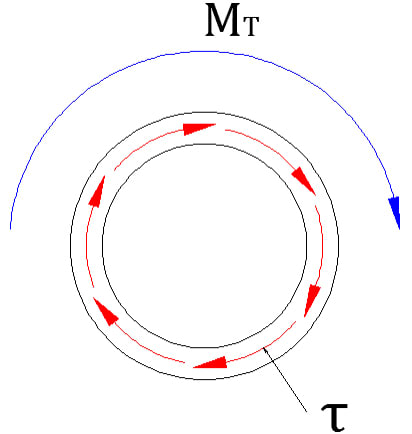
Understanding these types of pipe stresses and their effect on piping systems can help engineers make informed decisions about material selection, design modifications and maintenance practices. Analyzing their designs should ensure that the total stress on the system will be manageable.
The Importance of Pipe Stress Analysis
Preventing Failures and Downtime
Piping stress analysis helps identify potential points of failure in the piping system. As part of the analysis, engineers calculate whether pipes, fittings and supports can withstand the planned operating conditions, including pressure, temperature and vibration. This allows them to proactively make necessary modifications or reinforcements to prevent cracks, leaks or catastrophic failures.
Prioritizing Safety
Understanding the operational limits of a piping system helps designers know what modifications are needed to keep workers safe. Protecting workers should always be the foremost reason for conducting a pipe stress analysis.
Ensuring Regulatory Compliance
Many industries are subject to stringent regulations on the design and operation of piping systems. Pipe stress analysis allows engineers to assess whether a piping system meets required design codes and standards, such as ASME B31.1 or ASME B31.3. Compliance with these standards is crucial to meet safety requirements and avoid legal issues.
Optimizing System Performance
Properly designed piping systems can minimize unnecessary stresses, reduce maintenance costs and improve overall system efficiency. It can also lengthen the lifecycle of a system.
Process of Pipe Stress Analysis
The process of piping stress analysis includes the following steps:
- Gather system information: Collect all necessary data about the piping system, including pipe dimensions, material properties, operating conditions, and support locations.
- Model the piping system: Create a digital representation of the piping system using specialized software. This includes defining the pipe geometry, applying loads and restraints and incorporating components such as valves and fittings.
- Define boundary conditions: Specify the operating conditions and constraints of the system, including temperature, pressure and support conditions. This step ensures an accurate representation of real-world scenarios.
- Analyze the system: Apply engineering principles to simulate the behavior of the piping system under different operating conditions. This analysis helps identify potential stress points and displacements.
- Evaluate results: Examine the analysis results to determine if any components exceed allowable stress limits, experience excessive deflections or excessive loads or are prone to failure. This evaluation helps engineers make informed decisions and propose necessary design modifications.
- Optimize the design: Based on the analysis results, engineers can propose design changes to mitigate stress concentrations, improve support configurations or modify component specifications. This iterative process aims to achieve an optimized and reliable piping system.
Code Stresses and Design Basics
Allowable code stresses define the maximum stress levels that a pipe can sustain under different loading conditions, such as internal pressure, thermal expansion and external forces. These stresses are based on factors like material properties, design conditions, and safety factors.
Code stresses are specified in various industry standards and codes, such as ASME B31.3 for process piping and ASME B31.1 for power piping. Allowable code stresses vary for different materials and pipe sizes. For instance, carbon steel pipes have different stress limits compared to stainless steel or alloy pipes.
Part of pipe stress analysis involves considering safety factors, such as the design factor and the stress intensification factor. These factors determine the reliability and durability of the piping system under normal operating conditions and potential upsets.
Adhering to allowable code stresses and understanding pressure design basics are vital to developing piping systems that meet the required safety standards. They also result in a better design that will operate efficiently.
Industry Use Cases for Pipe Stress Analysis
Pipe stress analysis is widely used across different sectors for various purposes, as outlined below.
Oil and Gas Industry
The oil and gas sector heavily relies on piping stress analysis. With its extensive network of pipelines, ensuring the structural integrity of these systems is crucial. Piping stress analysis helps identify potential issues such as excessive deflection, thermal expansion, or vibration that could lead to leaks, failures, or even accidents.
Power Generation Industry
Power plants, whether nuclear, fossil fuel-based or renewable energy facilities, have complex piping systems that transport water, steam or other fluids at high pressures and temperatures. Piping stress analysis helps engineers design and optimize these systems to withstand the extreme conditions they operate under.
Process Industry
Process industries such as chemical plants and refineries also benefit from piping stress analysis. These facilities handle corrosive and hazardous materials, and any pipe failure can have severe consequences. Piping stress analysis ensures that the piping systems can withstand the pressures and temperatures involved in the process.
Real-world scenarios where piping stress analysis is required are diverse. For example, when new pipelines for nuclear projects are designed, engineers need to analyze the stress levels to determine the appropriate pipe material, thickness and support requirements. The team must also ensure compliance with various nuclear standards.
Similarly, during plant expansions or modifications, piping stress analysis helps engineers assess the effect on existing systems and ensure their continued safe operation. For example, when Giorgi Engineering Srl sought to optimize the design of its piping system to improve safety, it used Hexagon software to define the placement of supports and joints to reduce total stress on the system.
Choosing Pipe Stress Analysis Software
Utilizing advanced piping stress analysis software and consulting with experts can further enhance the reliability and efficiency of piping systems. When considering which software to invest in, consider Hexagon’s industry-leading solution, CAESAR II®. CAESAR II® allows users to design and analyze any size piping system. It also helps ensure your system complies with international piping code standards and environmental and equipment guidelines. In addition, it offers seamless integration with CAD design software.